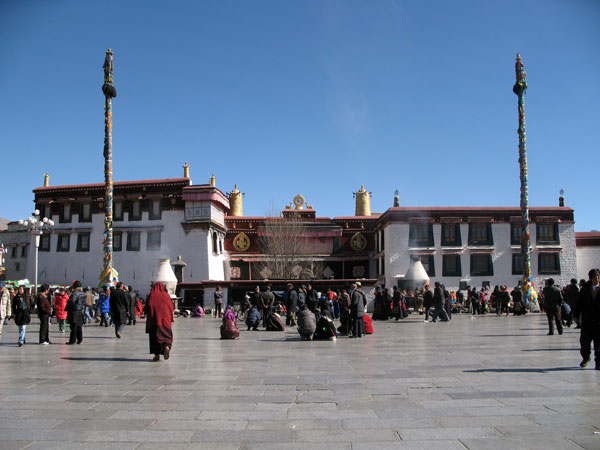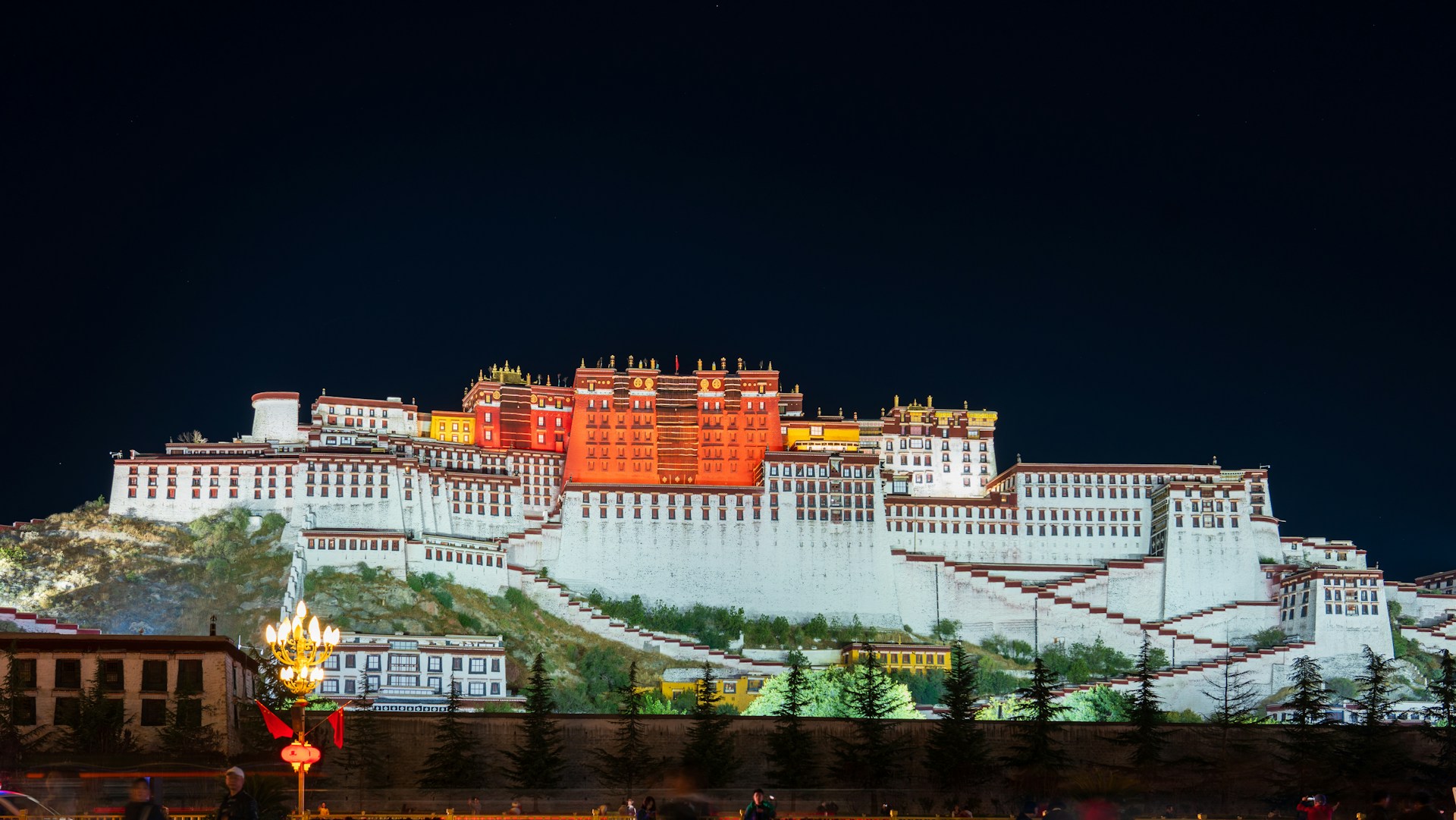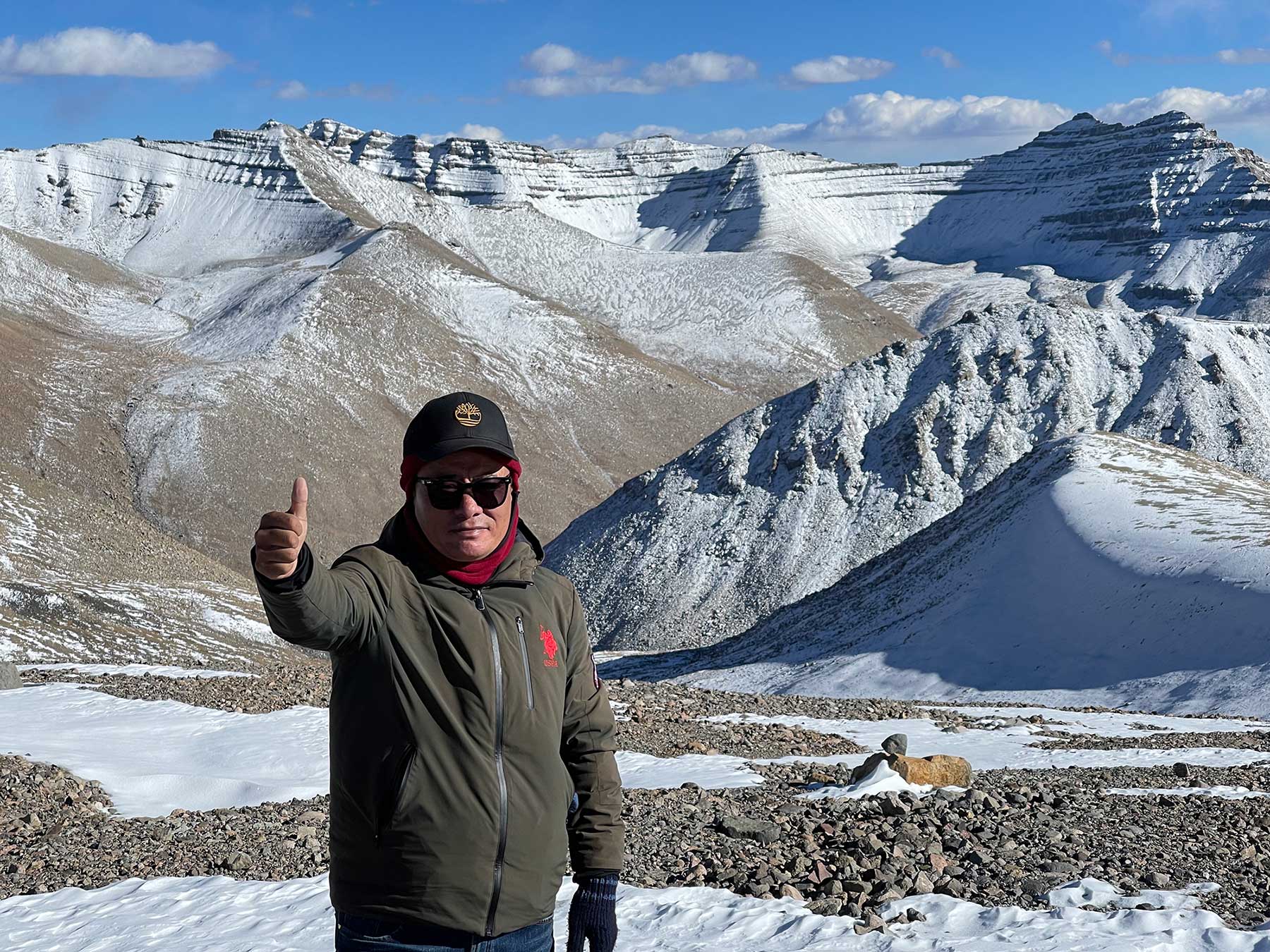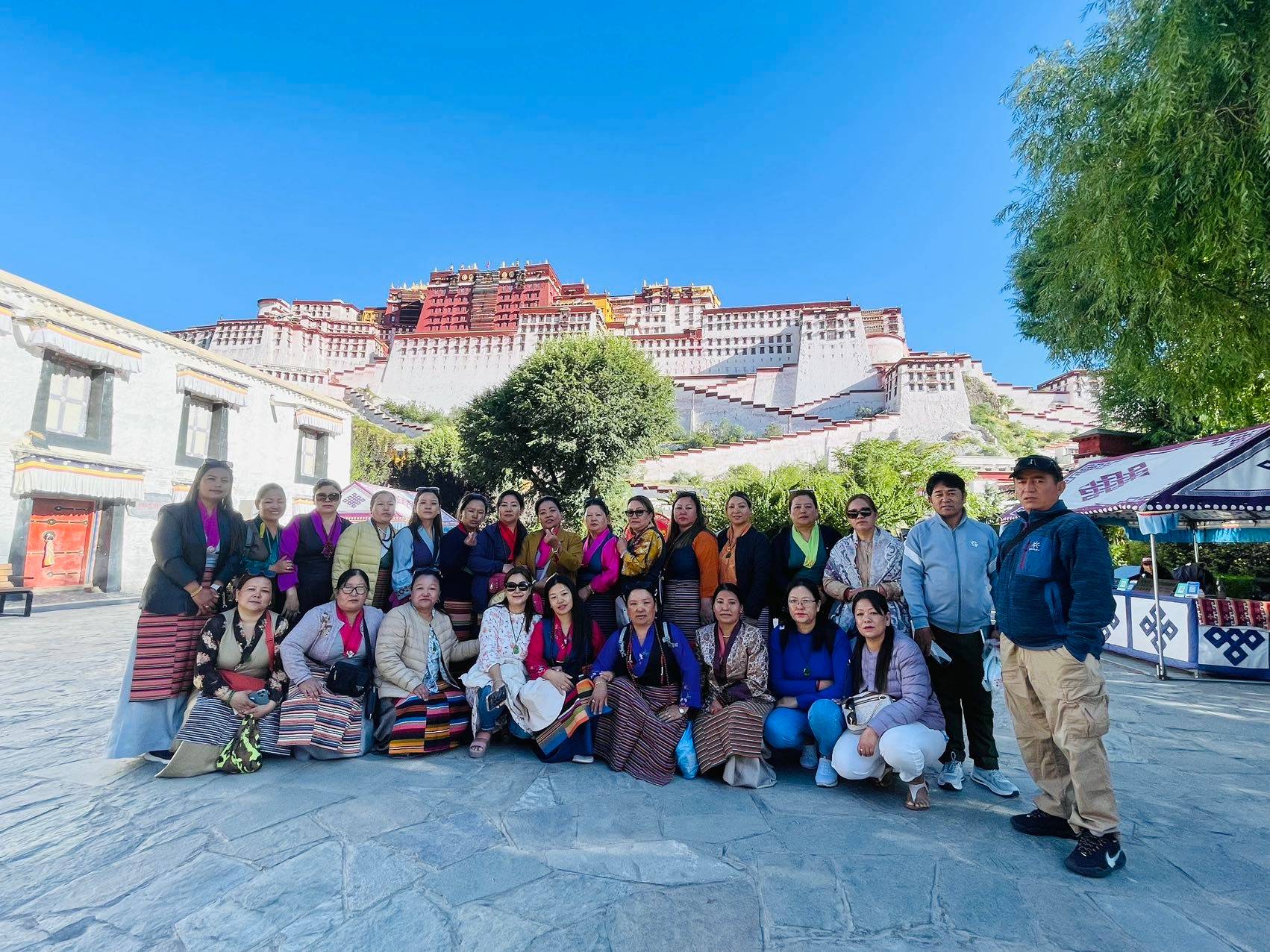Top 7 Must Visit Places in Tibet for First Time Travelers [UPDATE 2025]
Blend of Nature, Spirituality, and Artificial Wonders![Top 7 Must Visit Places in Tibet for First Time Travelers [UPDATE 2025] Top 7 Must Visit Places in Tibet for First Time Travelers [UPDATE 2025]](https://www.tibetkailashtour.com/wp-content/uploads/2024/06/6c978fb7ddcee0dcee698c61af837f0d.jpg)
Tibet, known as the Roof of the World and the highest region with an average altitude of 4380m, is one of the most beautiful countries. It has the world’s highest mountains and a long history of unique customs, architecture, and religious beliefs. Tibet blends nature, spirituality, and artificial wonders. From the Buddhist old monasteries to the splendor of Mount Everest and Mount Kailash, Tibet offers an intriguing experience. One can consider it an offbeat destination for their holidays or spiritual journeys.
Since the early 1900s, tourists have been captivated by the vast, serene region’s breathtaking landscapes and enigmatic religious traditions. People love to travel to such locations to explore nature’s beauty, spiritual enhancement, and ancient arts, culture, and architecture.
Tibet has numerous attractions, including monasteries, mountains, spiritual spots, rugged terrain, lakes, train journeys, and more. But there are some places you should visit during your vacation in Tibet, and if you are a first-time traveler, then you should explore these top 7 must visit places in Tibet that we have listed. Before we jump to the top 7 must visit places in Tibet, let’s dive into a few things about getting inside Tibet and how and what things are needed.
Of course.
Traveling to another country means you will need a visa, such as a Chinese Visa. You can get your visa from the Chinese Embassy available in your country, or if you cannot get a Chinese visa from your country, then you can plan your Tibet Tour from Nepal. You can apply for a Chinese Group Tourist Visa from the Chinese Embassy of Nepal.
After getting a visa (either a Chinese Visa or a Chinese Group Tourist Visa), you will apply for a Tibet Travel Permit. You cannot apply for the Tibet Travel Permit alone; it should be used by the travel agency organizing tours in Tibet.
Don’t worry.
If you booked the Tibet Tour package from us, we will do what is needed to get you a Tibet Travel Permit and any other required permits. Once we receive the permit, you can collect it from the address in mainland China if you are coming to China directly. And if you are traveling through Nepal, you will get it once you are there.
Note: Only having a visa will not allow you to do the Tibet Tour. You will need both.
Top 7 Must visit Places in Tibet
As we mentioned earlier, you can visit countless attractions or places during your tour of Tibet. Still, if traveling for the first time, you should consider touring these top 7 must visit places in Tibet o experience authentic Tibet.
-
Potala Palace
Potala Palace is the world’s highest Palace, standing at 3,750m on Marpo Ri Hill of Lhasa. The name Potala was derived from Mount Potalaka, which is believed to be the residence of Avalokiteshvara (an important Bodhisattva in Tibetan and Nepalese Buddhism). In 1994, this palace was listed as a UNESCO World Heritage Site. It is believed that King Songtsen Gampo built this Palace for his Chinese wife, Princess Wengcheng of the Chinese Tang dynasty. This was the Dalai Lama’s winter residence from 1649 until 1959.
The splendorous 13-story building covers about 13 hectares and has over 1,000 rooms. As you can see in the picture below, Potala Palace is generally divided into two sections: Red and White Palace. Red Palace, also called Potrang Marpo, is used for religious practices, and White Palace is used for administrative purposes.

There are also other things to explore in this palace, including the printing house, the School of Buddhist Logic, courtyards, and prison. This enormous architecture also holds religious and cultural artifacts, including thangkas, murals, statues, and more.
-
Jokhang Temple
Jokhang Temple, also known as the Spiritual Heart of the City, is the most revered temple of Tibetan Buddhism. It is located in Barkhor Square, where you will find the Barkhor market, one of the top attractions in Lhasa, where you can explore and perform the kora of Jokhang Temple. King Songsten Gampo built this temple for his Nepalese wife, Princess Bhirkuti, to keep the statue of Jowo Mekyo Dorje, the resemblance of 8 years Shakyamuni, brought as a dowry. Later, King Songsten Gampo passed away, and the statue of Jowo Sakyamuni, brought by his Chinese wife, Princess Wencheng, as a dowry, was also transferred here (previously kept in another temple called Ramoche).
The temple architecture combines Chinese Tang Dynasty and Indian Vihara styles with Nepalese elements. With three floors and an open roof, it has several chapels and chambers. Exploring Jokhang Temple, especially in the morning, provides peace and a spiritual experience. There used to be a massive celebration every Tibetan New Year, and if you want to be part of this celebration, you need to come here at that time of the year.

This Jokhang Temple is located north of Barkhor Street, one of the holiest and busiest street markets. Pilgrims used to circumambulate clockwise through Barkhor Street to reach the Jokhang Temple. If you visit the Jokhang Temple, you should circumambulate through the street and explore this Barkhor market more. You will find the authentic Tibetan lifestyle, food, and culturally rich community.
-
Namtso Lake
Namtso Lake, known as Heaven Lake, is the world’s highest saline lake, China’s second-largest lake, and one of Tibet’s three most important holy lakes. At an altitude of 4718m, it is the world’s highest saline lake, China’s second largest lake, and one of Tibet’s three most important holy lakes. You will be mesmerized by the breathtaking splendor of this sacred area as you stroll around the glistening lake and explore the spectacular surroundings. As the stunning landscape and calm ambiance enchant your soul, you will feel a sense of serenity and tranquility with each step.
This lake is undoubtedly one of the most beautiful lakes in the world, with its pristine turquoise water and the panoramic surroundings of snow-capped Mt Nyenchen Thangla Ranges. The lake is incredibly captivating as its hue shifts from deep blue to pale green throughout the day. The mountains’ backdrop makes this lake’s beauty more heightened and gives a fresh sense of amazement in every instant. The nomads usually use these lake shores for cattle grazing, and you will find yaks and sheep around.’

If you stay overnight at Namtso Lake, you will witness the most beautiful sunrise and sunset, especially the sunset where the sun’s golden rays cast the snowy mountains and glistering Namtso Lake. The view and the ambiance will amaze you, otherworldly and speechless. You can also perform other activities besides enjoying the captivating view, including the Nyenchen Tanglha trek, hiking on Tashi Dor Island, and visiting the holy Elephant Gate on the north shore of Namtso.
-
Mount Everest Base Camp
Mount Everest North Base Camp, at an altitude of 5200 meters, is the perfect spot for a clear and closer view of Mount Everest (8,848m), while Everest South Base Camp in Nepal, at an altitude of 5364 meters, does not offer a clear view as Mount Lhotse (8,516m) blocks the view. Reaching the Everest Base Camp in the Tibetan region is relatively easy as you can get there in a vehicle. But if you are looking to trek to the base camp, then it’s safe, and with the gradual increment, there is less chance of altitude sickness and no issues of landslide and avalanche.

During your stay at Everest Base Camp, at night, you will see the clear skies full of stars, while in the morning, your eyes will be awed by the stunning view of the sunrise over Everest. The trail to Everest Base camp even has more surprises for you with the astonishing views of the Himalayas. As you reach the Gawula Pass, you will be mesmerized by the breathtaking view of the world’s highest mountains, including Mt. Shishapangma (8,030m), Mt. Cho Oyu (8,201m), Mt. Makalu (8,463m), Mt. Lhotse (8,516m), and Mt. Everest (8,848). This will be one of the highlighted and unforgettable memories that will return with you.
-
Mount Kailash and Lake Mansarovar
Mount Kailash and Lake Mansarovar are the most sacred places on Earth. Standing tall at 6,714 m, Mount Kailash, also known as Mount Meru in Tibetan or Kang Rinpoche, is the most revered mountain for all four religions, including Hindus, Buddhists, Jains, and Bonpos. This holy Mount Kailash is believed to be the center of the universe. Also, Mount Kailash is the source of the four sacred rivers, Indus, Sutlej, Brahmaputra, and Karnali, which flow through Asia on the North, West, East, and South, respectively.
Lake Mansarovar, the world’s highest freshwater lake, surrounded by arid surroundings, is located near Mount Kailash at an altitude of 4,583m. It is the holiest lake, and bathing in it will wash away all your sins and burdens and set you free from reincarnation. Pilgrims circumambulate this holy lake for 52 km to strengthen their bond with the ultimate Lord Shiva. The peculiar serenity of Lake Mansarovar is among its most fascinating “secrets.” The waters of Mansarovar are extraordinarily calm, even when powerful winds rage across the Tibetan plateau. Nearby to this lake, there is another lake named Rakshas Taal, and despite being close to one another and having comparable climates, these two lakes have very distinct water compositions.

Devotees taking this holy Kailash Mansarovar yatra will be filled with calm and peace and bring the Lord Shiva’s presence with them. The untouched beauty of these places, the peacefulness, and the spiritual connection make pilgrims closer to the Lord Shiva. One who does the Kailash Mansarovar circumambulation (kora or parikrama) is believed to/she will get rid of their sins and reincarnations.
-
Tashilunpho Monastery
Tashilunpho Monastery, built by the first Dalai Lama, Gendun Drupa, in 1447, is the seat of the Panchen Lamas. This monastery is one of the four most significant monasteries of the Tibetan Gelugpa Sects, including Drepung, Sera, and Ganden Monastery. It is not just a monastery but a complex full of chapels, halls, tombs, and cobblestone streets.
Some of the major attractions include the Statue of Maitreya, Wall Paintings, Thangka walls, and multiple halls like Sutra Hall and Assembly Hall. The Statue of Maitreya, a 26-meter-tall statue of Buddha, is the major attraction of this monastery. It is believed that the Maitreya Buddha, also known as Jampa, is the Buddha’s future incarnation who will arrive to preserve all life on Earth when Buddhism crumbles and the faith of Buddhists dwindles. This is anticipated to occur around 30,000 years following the passing of Gautama, the first Buddha.

Here, you will get to explore two colleges of Tibetan Buddhism. Around these colleges, you will witness the student monks chanting mantras and doing debates. Among these two colleges, one is Philosophy College, where you will witness the discussion between teacher and student concerning the philosophy and relevance of Tibetan Buddhism. Doing Kora is a must, and once you reach the highest point, you will get a breathtaking view of the monastery and the whole city below, a panoramic satisfaction.
This monastery reminds us about the importance of holding onto the cultural and religious legacy, never leaving the roots. Those who stick to their roots become stronger and purer.
-
Norbulingka
Norbulingka Palace, which means Jewel Park, is the largest man-made garden in the world and a UNESCO World Heritage Site. It served as the summer home of the succeeding Dalai Lama. The palace is generally divided into three parts: the courtyard, the Palace, and the Garden. It has more than 400 rooms, and the garden extends to 3.4 km with woods and grazing green land.

This palace is livelier during the Shoton Festival when people picnic in the garden and listen to operas by artists. So, the best time to visit here is during the Shoton Festival. Today, Norbulingka symbolizes the resilience of Tibetan culture, drawing tourists worldwide to take in its historical significance and tranquil ambiance.
Conclusion
Tibet is known for its rich cultural legacy, stunning natural beauty, and distinctive blend of traditional Tibetan culture and Buddhism with its vast and diverse territory. This region has much more to offer, and for first-time travelers, it is a must to stay a little longer to fully explore Tibet’s beauty, cultural, and spiritual significance.
So, what are you waiting for? Contact us now.







![Best Time to visit Tibet [UPDATED 2025] Best Time to visit Tibet [UPDATED 2025]](https://www.tibetkailashtour.com/wp-content/uploads/2024/04/jpeg-optimizer_tibet-kailash-tour-travel-trips20.jpg)
![Visa Free Travel to Tibet in 2025 [Latest Updates] Visa Free Travel to Tibet in 2025 [Latest Updates]](https://www.tibetkailashtour.com/wp-content/uploads/2024/04/jpeg-optimizer_tibet-kailash-tour-travel-trips9.jpg)



